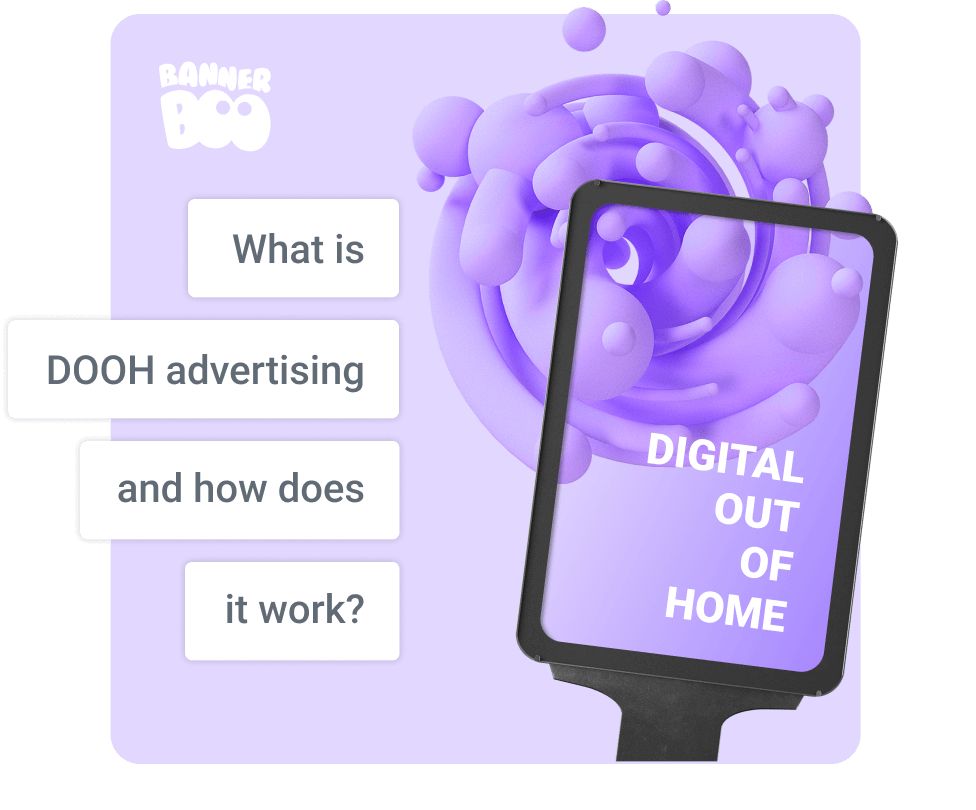
Advertising of goods and services existed long before the Internet and social networks. Out-of-home (OOH) is an acronym that covers advertising activities that potential customers see around them when they are outside their home. With many formats (drawings on buildings, stickers on walls, LED screens, posters, and signs), OOH advertising has stood the test of time and actively attracts the attention of the target audience. Over the past decade, OOH advertising has gained another advantage — a digital component — and evolved into DOOH, which achieves even greater results. In addition, DOOH has become one of the most dynamically growing and influential advertising formats.
Changes in the world, irreversible processes of economic development, the dynamics of the level of competition and the constant appearance of new products directly affect the development of advertising activities. Over the past few years, advertising tools and their effectiveness have fundamentally changed. For example, the legislation introduced additional restrictions that guarantee the security of users' personal data, but limit the targeting options for advertisers.
Now, it's not enough to just advertise and wait for results. It must be done with quality and creativity, using every possible means to attract the attention of potential buyers.
We still remember the times when the main advertising was placed on billboards, posters, city lights in cities or in printed flyers. The digital sphere was limited to television and radio advertising. Fortunately, technology is developing so quickly that it gives advertisers even more opportunities to communicate with potential consumers of products and services.
Digital Out-of-Home advertising (DOOH) is a new, influential and multi-faceted concept of business promotion where advertising will be most likely to be seen by the target audience. More information about the advertising channel, its advantages and effectiveness — further in the article.
The abbreviation OOH defines any advertising medium that a potential buyer sees outside of their gadget and place of residence. The first thing that comes to mind is a huge billboard. But, in fact, there are many more advertising formats:
radio;
TV;
publications in newspapers;
publications in magazines;
direct mail.
This is a kind of exchange of messages between the company and consumers when they are in public places, going to work, waiting for an elevator, walking down the street or visiting a shopping mall.
Although these advertising channels have laid the foundation for new digital advertising solutions, they are not perfect for outreach as well. Disadvantages such as production time and placement complexity, limited creatives, strict rules for the use of texts and images, prompted advertisers to look for additional channels of communication with the target audience.
Adding one letter to the abbreviation DOOH (Digital Out-of-Home) corresponds to the combination of offline advertising (OOH) with digital capabilities (D). This advertising format uses opportunities to broadcast content to the audience through digital screens in elevators, airports, train stations, street advertising, billboards and television programs.
The main difference is that OOH advertising remains fixed in place with one image displayed for some period of time, while DOOH can show several animated clips or videos on digital screens. In addition, DOOH advertising interacts with users directly at the point of placement, which increases the interactivity of any business's advertising campaign.
Examples of DOOH advertising:
dynamic display of hotel advertisements broadcast in airport halls;
offers of food chains in food courts of shopping centers or near them;
roadside dynamic displays of car advertising (often near the brand's dealership);
city lights on the streets, with advertisements for shops or points of sale that are located around.
And although external media is a quite familiar format for the audience, their transition to the digital sphere is happening at a very fast pace. According to Spiceworks, the market is expected to grow to $8.4 billion by 2023. This is a clear indicator of advertisers' trust in these advertising media. In addition, the industry offers integrations, applications and SaaS solutions that turn DOOH advertising into a smart, manageable and forward-looking marketing channel.
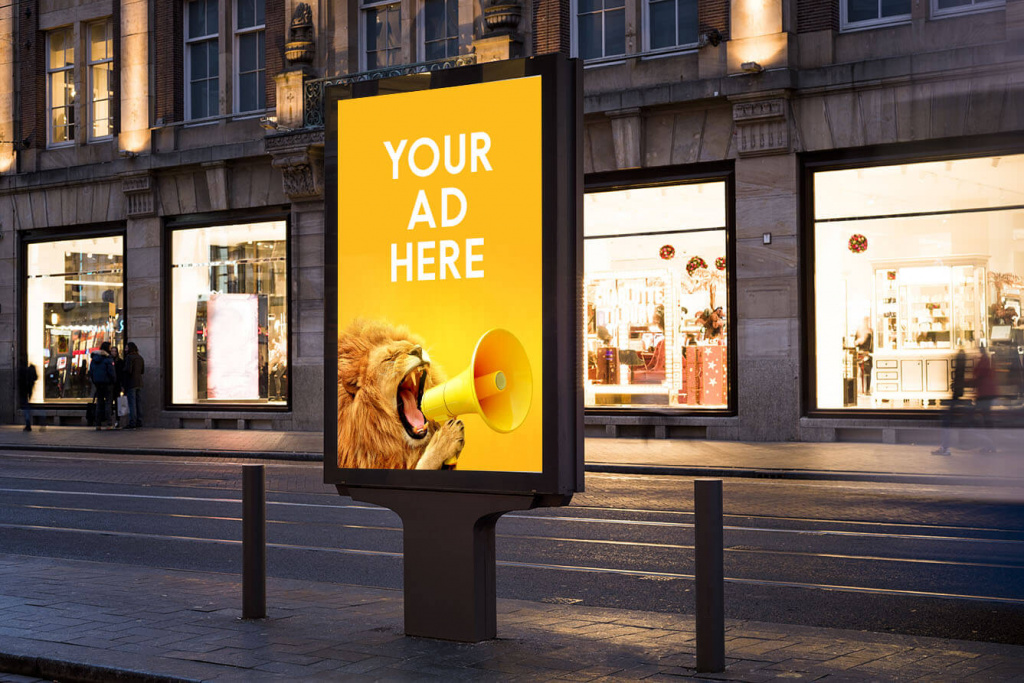
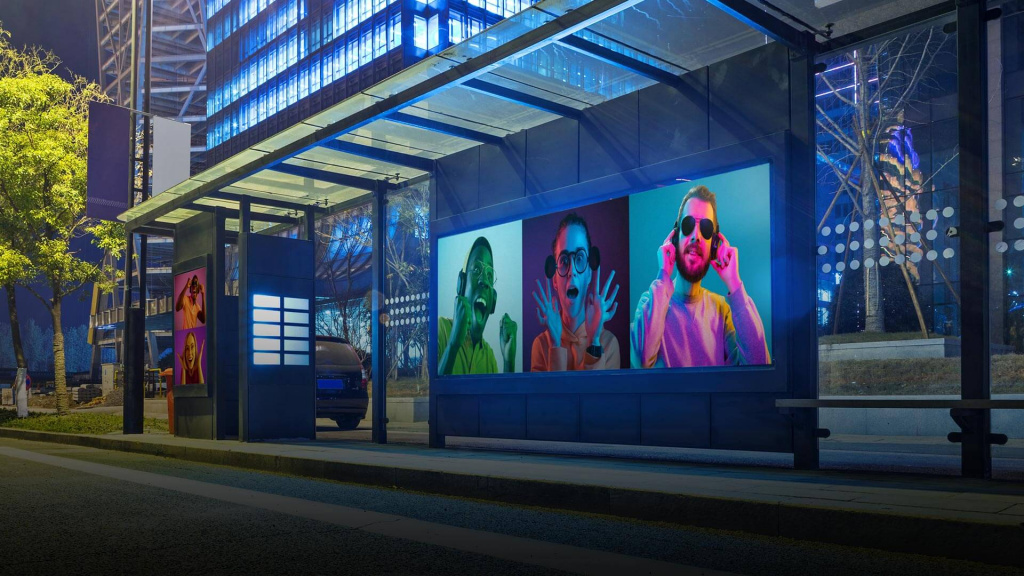
The market of advertising platforms is very saturated. Marketers across all industries are striving to communicate their advertising message in the most effective way possible and reach the people who will truly benefit from viewing that content. Digital screens deliver vibrant creative that is relevant and compelling in multiple locations that span the potential consumer's out-of-home journey — something that other channels simply can't offer.
In fact, the media has become such a permanent part of life that it is almost impossible not to notice it. In terms of numbers, according to Vistarmedia, 98% of consumers have definitely seen at least one of DOOH in the past 30 days, and 84% recall seeing this ad format. At the same time, according to recent research by Kantar and Snapchat, only 55% of social media users remember advertisements. Therefore, if your task is to create positive emotions from interaction with the brand, then using DOOH can be a perfect solution.
How often do users pay attention to ads (given their format)?

*Source: https://theneuron.com
By 2025, the global DOOH market is expected to reach 31.7 billion US dollars per year. Meanwhile, DOOH trends show that the number of screens could rise to 87 million worldwide.
Similar to the digital or mobile industries, DOOH can provide relevant information about audience demographics and engagement levels. Since the industry is developing very dynamically, this advertising format can become an effective part of a multi-channel marketing strategy for business development.
The use of new and interactive formats makes DOOH advertising very versatile. It can be displayed at a busy public transport stop, in a shopping mall, on a digital billboard or at a busy intersection. The real reason that DOOH advertising is progressing much faster than expected is that the communication with the target audience is happening in real time. That is why brands can increase efficiency and direct the flow of customers to their resources.
With the development of urbanism, all major countries and cities of the world are expanding and modernizing their transportation systems, adding new and improved digital billboards. This is a good incentive for the growth and spread of the DOOH advertising network. At the same time, buying ads has become very easy: brands can buy and sell their ads online to make real progress in the optimal amount of time.
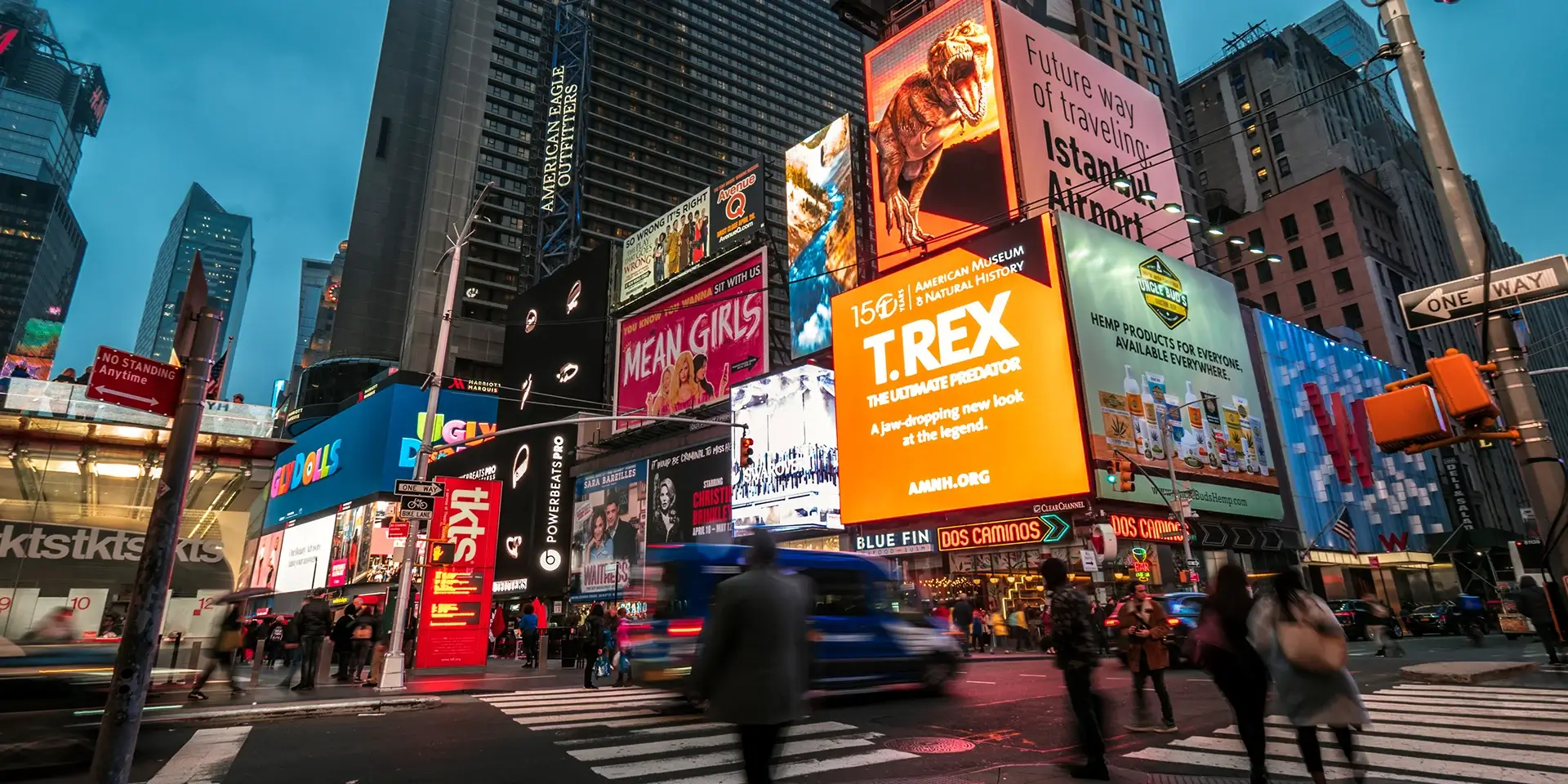
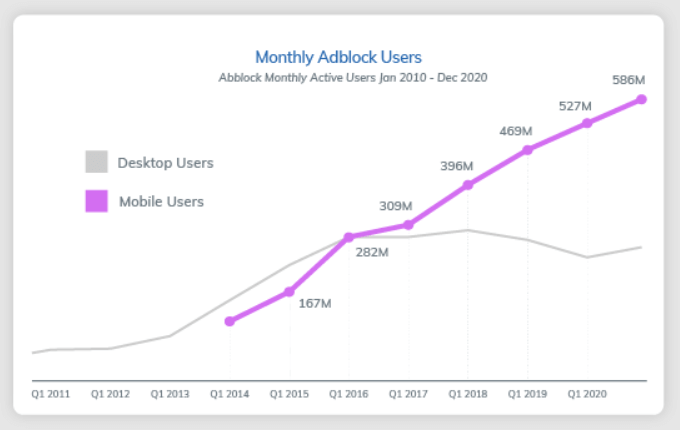
*Source: cnet.com
DOOH advertising is an active format that delivers relevant information, raises awareness and interacts with the audience through personalization. Digital advertising placed in areas where the audience frequents has a great potential to attract potential customers. Any advertisement can be placed in strategically important places: train stations, bus stops, airports, etc.
Usually, DOOH is not as low priced as online advertising. In addition, the results of such companies are more difficult to measure (at least now). The whole thing is that each ad impression can be seen by many people at the same time, making it difficult to compare prices with digital impressions. Advertisers usually provide data about the location of a mobile device and may provide an estimate of the traffic near a particular outdoor ad, but this is only an approximation. According to clearcode.cc, it's likely that there will be DOOH advertising in the future that will incorporate some form of facial recognition to deliver meaningful results.
Usually, it is possible to achieve the maximum result of advertising campaigns thanks to the combination in marketing plans of DOOH and other advertising channels, in particular digital and social networks. A consumer is 48% more likely to click on an online ad after seeing the same ad in OOH.
While online advertising networks rely on cookies or device IDs to target specific individuals, digital out-of-home advertising operates differently. The most critical aspect here is the location data that networks obtain from registered companies.
How do companies share data?
as an example, Tamoco, a data processing company that provides location-based advertising solutions, can help companies measure the performance of DOOH advertising campaigns using a range of data and sensors (such as GPS, Wi-Fi and Bluetooth).
Placed (a location data company owned by Snap, Inc., owner of the social app Snapchat), offers to match registered users' geographic location data to online advertising and measure the effectiveness of those ads.
Because it is quite difficult to correlate audience actions with DOOH advertising, businesses usually measure the results of campaigns by comparing their KPIs (sales, registrations, downloads, etc.) before and after the campaign is launched. However, there are other ways to measure efficiency:
using mobile data, you can see when users are likely to see a retail brand's DOOH ad, and then move on to location-specific analysis;
if you include special promotional codes or QR codes in your advertisements, you can track the number of users who use them.
We recommend trying all possible options for analyzing the results until you find a format that is perfect for your business.
Targeting is a key advantage in the digital world. It is based on audience data that marketers form successful advertising strategies and make decisions about the appropriateness of using advertising channels. Instead, OOH media is bought solely based on geographic location, such as within certain zip codes or around certain store locations.
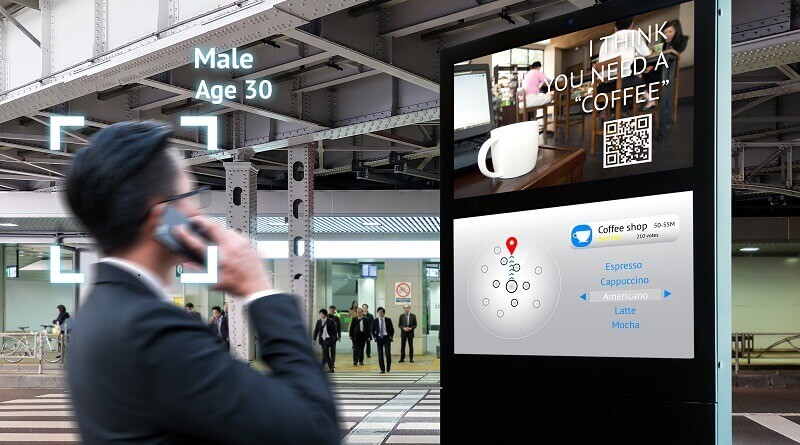
However, with the development of advertising activities, brands can use consumer traffic patterns to make informed decisions about the placement of outdoor advertising. Understanding market behavior and trends can enable you to activate DOOH media to reach your target audience in the right place at the right time.
In addition, programmatic OOH advertising uses a range of tactics to select the best location for ads, such as audience targeting, geographic location, distance, and mobile distribution.
Programmatic DOOH is the newest form of advertising that automates the purchase process at the right time and place. Brands can auction their DOOH ads using a "demand-side platform" (DSP). Then contact the SSP (Sell Side Platform), which ensures the selection of the advertising place of purchase for the brand.
Programmatic DOOH has programmatic transactions. It enables brands to set detailed and precise conditions that trigger a DOOH ad slot into rotation. At the same time, there are no limitations in the virtual working state, and marketers can constantly use the data to create content.
Talking about the key advantages of software DOOH, it is worth highlighting the main one — remoteness. For example, to advertise in print media, brands need to contact the network owner and discuss placement details. But for software DOOH, such communication is optional. Digital signage advertising is controlled by software, making it much easier to manage and adapt to customer needs and specializations. An advertiser can independently access the network's advertising resources and book placements based on desired demographics.
Programmatic DOOH allows marketers to set reach parameters to upload creatives, set budgets, audience targeting and other campaign requirements.
Advantages of using software DOOH:
the software platform provides a single access point for all DOOH resources;
media planning and transactions can be carried out through a managed service, self-service or through a multi-channel DSP (management is possible even with complex and large campaigns);
the system provides data justifying purchase decisions for each individual location;
comprehensiveness: it is often not necessary to measure the results at each individual location, but the overall results will be much more important.
With programmatic DOOH, every brand can independently and confidently manage campaigns and get maximum results.
How is the price formed?
For external media, the CPT model is used — "price per thousand impressions" of advertising. However, it will be difficult for advertisers to count the number of advertising contacts because one DOOH ad can be seen by several people at the same time.
Therefore, owners of advertising space often evaluate video advertising as a percentage of advertising resource (total duration on the network of digital screens) and cycle frequency (number of repetitions of advertising per hour/day). Based on these data, the price for the client is formed.
If you plan to choose DOOH advertising to promote your business, we recommend you to develop a marketing strategy that will bring maximum effectiveness.
By the way, it is important to know the development trends of DOOH digital advertising. What can we expect in the future up to 3–5 years?
This is the logical path forward for DOOH, not only because technology can make it easier to manage advertising opportunities, but also because media buyers have a real need for more centralized and consolidated data.
For example, a shopper walks into a supermarket and receives offers and coupons based on their location, time of day, weather, etc. on their gadget. And also sees OOH advertising, which will be as personalized as possible.
Possible developments: from a DOOH display that will be able to read smartphone data on the go to personalize ads, before facial recognition and contextual advertising. DOOH is getting smarter every day.
DOOH for now, the only form of digital advertising that goes beyond gadgets, thus filling an important gap in the way brands communicate. This trend is expected to continue to gain momentum.
Today's DOOH displays are more exciting, much more innovative (for example, advertising displays at roadside kiosks with free Wi-Fi) and more effective than the advertising activities we are used to. By reaching audiences through OOH (which is evolving into DOOH), advertising encourages users to search for brands online.
Brands are looking for more immersive forms of advertising through mobile devices, large screen VR TVs, HD TVs. This is what pushes DOOH to develop and use innovative technological solutions.
Remember, many companies focus so much on the online space that they simply ignore the world of DOOH opportunities. If your social media campaigns and advertising platforms aren't getting the results you want, maybe it's time to think outside the box? DOOH is a great option to use.
Digital OOH advertising shows good engagement results, especially if it is bought programmatically. If you have an idea for creating an advertisement, we recommend using the BannerBoo service to bring it to life. BannerBoo's online banner ad builder offers a wide variety of different ad formats for use in a variety of placements. In particular, DOOH campaigns can be created in a convenient and intuitive service created by professional designers for marketers and business owners.
Spend time looking for good examples of ad campaigns. You can use the Facebook ad library, a Pinterest account, or browse 12 000+ ready-made professional ad templates at BannerBoo. This will allow you to choose advertising design by theme, style, animation, aesthetics, mood or color.
In order to start working, you just need to log in to the service. Next, you have two options: create a banner from scratch in HD format, or choose one of the templates.
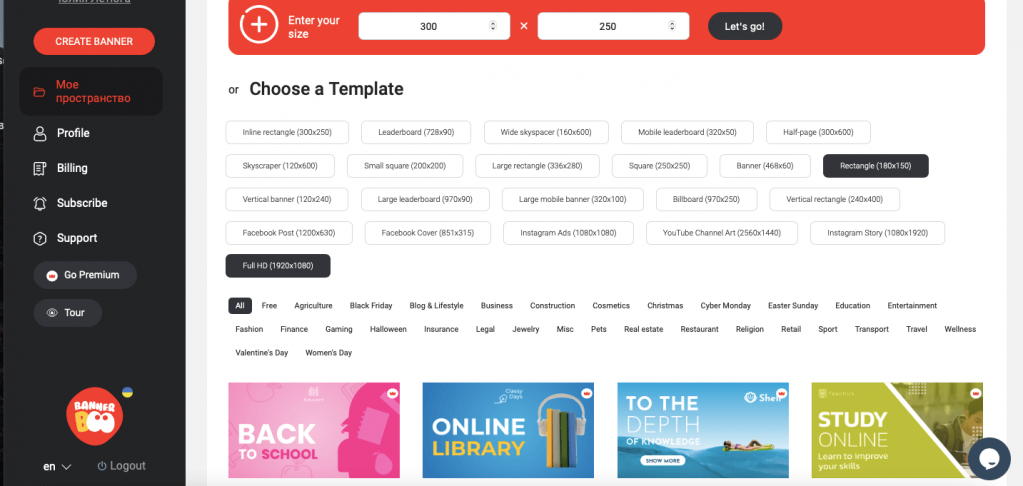
If you are creating a new banner: implement all ideas in a simple and clear graphical interface, where the entire toolkit serves to create a creative as quickly and easily as possible.
If you’ve chosen a template: adapt the template to your business needs. Change texts, add branded fonts, images and photos, preview animations and visuals. You can completely change the template beyond recognition, but so that it conveys the emotions and style of your brand.
In BannerBoo, it is easy to add uniqueness to the finished advertisement: animated GIF stickers, text animation, written code or style. Don't worry, we made sure that all the technical aspects did not interfere with creation, even for a non-designer.
When the design is ready, it's a matter of small things. Simply select the banner format you want to download to your laptop and transfer it to place and publish.
Creating an advertising banner in BannerBoo is a great opportunity to save resources and use DOOH as a tool to expand your marketing strategy.
Out-of-home digital advertising has been around for years, but remains one of the most underrated marketing channels. DOOH advertising offers a number of benefits that are often overlooked by digital marketers.
While DOOH advertising has huge potential for growth, it would be wrong to view it as an entirely new channel separate from your current marketing strategy. After all, DOOH works best in synergy as an additional service, especially for increasing brand awareness. Using a variety of ad campaign formats , geographic display or video ads will drive more engagement and attract a larger audience of consumers.
The BannerBoo platform allows you to create display ads for any screen format. You will be able to create an ad that will perfectly highlight your market offer thanks to external media campaigns.
Out-of-Home (OOH) advertising is an external physical medium that facilitates brand communication with potential audiences in locations outside of permanent residence. These are advertising posters on the streets, in airports, train stations and seaports. They show an advertising message to anyone who walks or drives past the advertising structure.
Your audience doesn't spend all their time on gadgets. People go for walks in parks, travel, visit shopping malls, etc. There, you can have another opportunity to connect with potential customers, show information about your company and talk about the promotion.
DOOH (Digital Out-of-Home) combines offline advertising (OOH) with digital (digital) opportunities. This advertising format uses digital screens to broadcast content in elevators , airports, train stations, malls, on the street, etc.
This is a brand advertising campaign that aims to achieve specific marketing metrics while communicating with a selected audience segment. Digital media are used to show the campaign — screens, citylights, TVs.
wide format (from billboards to bus stops on city sidewalks);
local marketing (advertising around office buildings, shopping centers, gyms, restaurants, bars, universities, etc.);
points of sale (located inside stores where the brand's products are sold: department stores, fast-food and fast-food restaurants, convenience stores, grocery stores, liquor stores, and pharmacies).
DOOH (Digital Out-of-Home) is an interactive outdoor advertising tool that captures attention and enables brands to reach a wide audience effortlessly. It is placed with the help of digital screens in areas with the largest crowds.
Programmatic DOOH is a form of advertising that automates the buying process at the right time and in the right place among those companies that offer placement.
Definitely yes! By 2025, the global DOOH market is expected to reach US$31.7 billion per year.